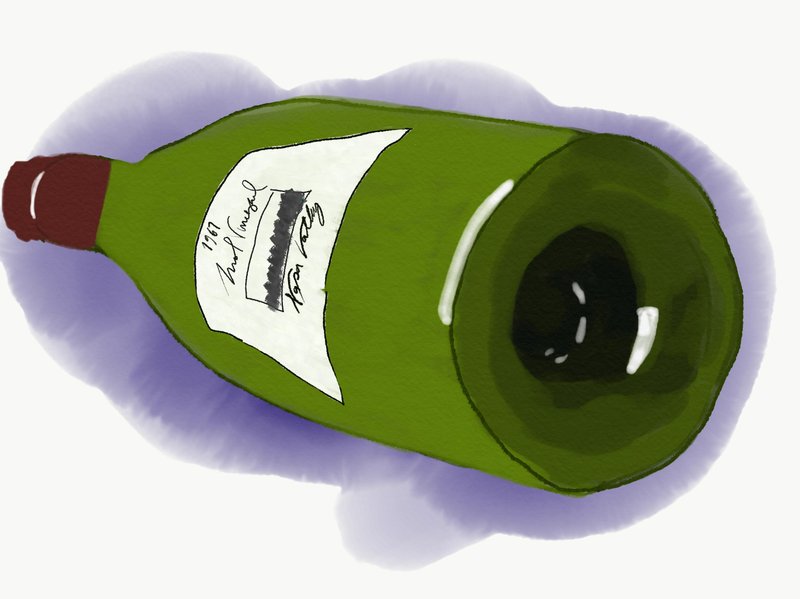It's that time again to answer some of your questions about the world of wine.
I enjoy your questions so keep them coming.
Why is there a deep indentation on the bottom of some wine bottles?
The indentation is called a "punt." In the past the punt was functional and the result of wine bottles being handmade by glassblowers. The seam was pushed up — creating the punt — to ensure the bottle would stand upright and improve the bottle's structural integrity. Today, punts are mostly cosmetic as most bottles are made by machine and the glass is much stronger. However, punts do serve a function in bottles of sparkling wine where they allow for an even distribution of pressure.
How many bottles of wine are made from 1 acre of vineyard?
I get asked this question a lot. I'm not sure if it's just dinner party banter or to simply see if I know the answer, which is a little lengthier than you would think. There will always be variables affecting the yield of a specific vineyard, such as growing conditions during the season, the grape variety and its vigor, vine spacing, row spacing and even how many clusters the vineyard keeps on the vine. Given these many variables, you can see why it's not an easy question to answer. If I were giving a broad estimate it would be: a vineyard usually will produce a range from 2 to 10 tons per acre. So, a general rule is 1 ton of grapes will result in about 2 barrels of wine. Each barrel will contain around 60 gallons, 25 cases or 300 bottles. If you take a low yielding vineyard only producing 2 tons per acre (many of your boutique wines) this will result in about 1,440 bottles. But, do the same math on a very high yielding vineyard (like many of mass-market wines) with 10 tons per acre producing about 7,200 bottles.
Why are there so many books about vineyard dogs?
This is a great question. I have several books about dogs in the vineyard sitting on my coffee table now. At some vineyards, the dogs are merely beloved companions, but at others, they are an integral part of the workforce. Vineyard dogs keep deer, birds and other pesky animals at bay. A dog patrolling the vineyard will generally deter deer from stripping the entire vineyard. The dogs are also effective at chasing and deterring squirrels, gophers, birds and other animals. In some vineyards, dogs' keen sense of smell is being used to help determine a grape's readiness for harvest and even detecting mealybugs.
Will I get sick from drinking "old wine"?
The simple answer is, of course you will if you drink too much of any wine. The serious answer is no. Some people ask the question about wine spoiling as it gets older. I have tasted many bottles of wine older than I am. Alcohol acts as a preservative so bottles in the past were intended to age with higher alcohol levels. Older wines intended to age will change over time but will simply lose freshness at a rate depending on when it is being opened. When a wine is past its peak (aka old) it will taste fruitless, more like raisins and nuts, and have a brown color. It won't taste good, but even if the wine has turned to vinegar it is not unsafe.
Lorri Hambuchen is a member of London's Institute of Wines and Spirits. Contact her at the Arkansas Democrat-Gazette, P.O. Box 2221, Little Rock, AR 72203, or email:
uncorked@thewinecenter.com
Food on 02/19/2020
